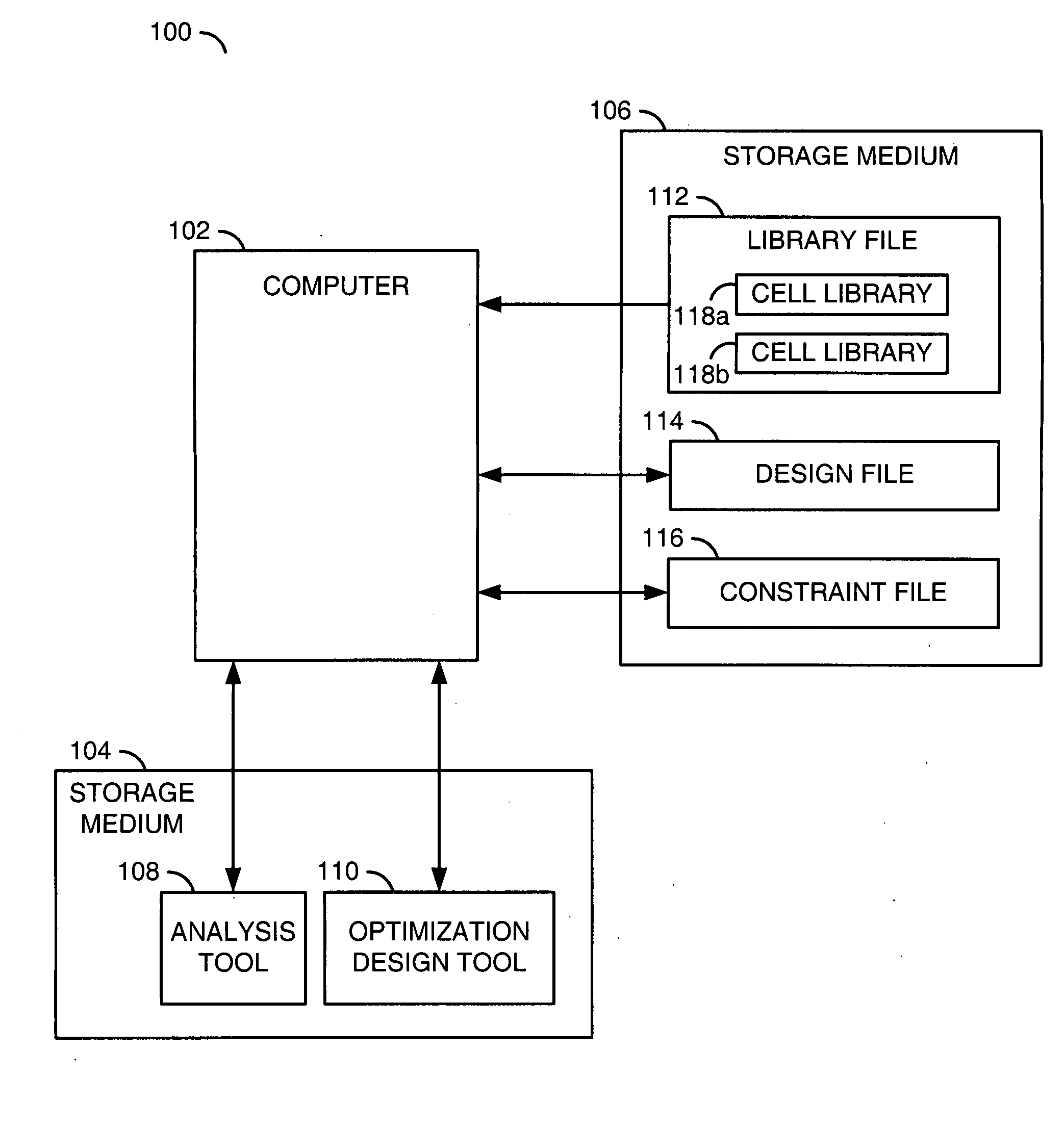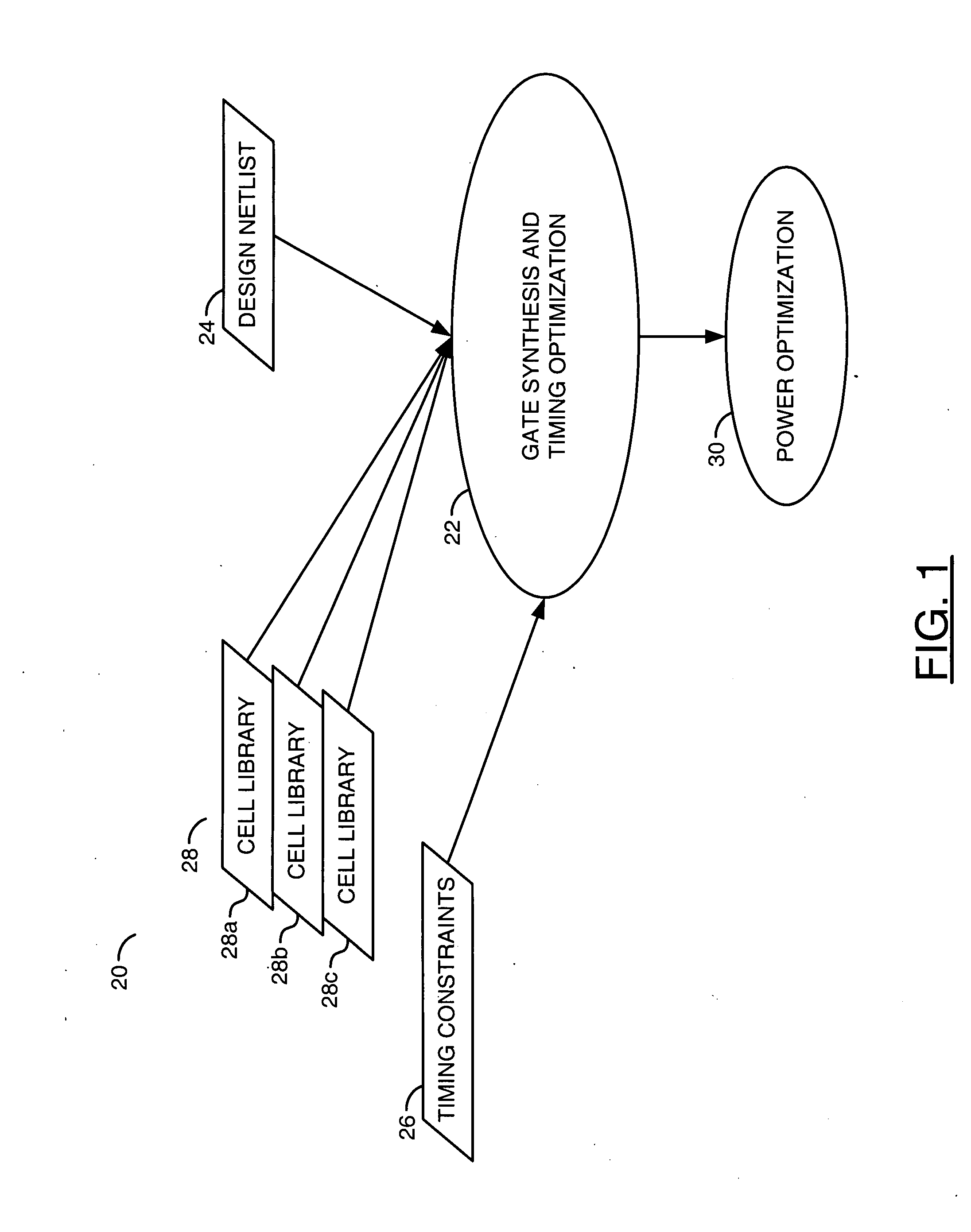Cell library management for power optimization
a technology of power optimization and cell library, applied in the field of circuit optimization, can solve the problems of static power consumption, inability to fully stop current leakage, and often inability of tools to distinguish between static (leakage) power and dynamic (switching) power
- Summary
- Abstract
- Description
- Claims
- Application Information
AI Technical Summary
Problems solved by technology
Method used
Image
Examples
Embodiment Construction
[0027]The present invention provides an organized method and / or architecture for determining which of multiple power modes is dominant in a circuit. The invention generally uses the resulting information to control library availability to design tools resulting in a best (lowest) total power utilization while still optimizing the circuit design in terms of area and speed.
[0028]Referring to FIG. 2, a block diagram of an example implementation of an apparatus 100 is shown in accordance with a preferred embodiment of the present invention. The apparatus (or system) 100 may be implemented as a computer system. The apparatus 100 generally comprises a circuit (or module) 102, a circuit (or module) 104 and a circuit (or module) 106. The circuit 102 may be implemented as a computer (or processor). The circuits 104 and 106 may be implemented as storage media (or memories).
[0029]The storage medium 104 may store a software program 108 and a software program 110, both readable and executable by...
PUM
 Login to View More
Login to View More Abstract
Description
Claims
Application Information
 Login to View More
Login to View More - R&D
- Intellectual Property
- Life Sciences
- Materials
- Tech Scout
- Unparalleled Data Quality
- Higher Quality Content
- 60% Fewer Hallucinations
Browse by: Latest US Patents, China's latest patents, Technical Efficacy Thesaurus, Application Domain, Technology Topic, Popular Technical Reports.
© 2025 PatSnap. All rights reserved.Legal|Privacy policy|Modern Slavery Act Transparency Statement|Sitemap|About US| Contact US: help@patsnap.com



